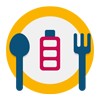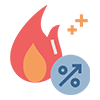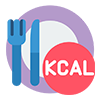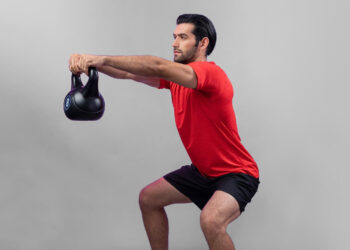How many calories you burn backpacking depends on your weight and the pack’s weight. On average, a 160-pound person burns 533 calories per hour, and a 200-pound person burns 667 calories per hour backpacking.
How To Use The Backpacking Calculator
The calculator is very simple and easy to use and we’ve shared how to do it step-by-step.
- Choose the desired unit of measurement – imperial (pounds) or metric (kilograms)
- Enter your weight
- Type in the number of minutes of hiking/backpacking
- Select the backpacking activity
- Hit Calculate
You should now see an approximation of how many calories were burned hiking/backpacking
How Does The Calculator Approximate Calories Burned?
Formula
This tool uses the following formula to determine the number of calories burned.
- Calories burned per minute = (MET x body weight in Kg x 3.5) ÷ 200
What is MET?
MET stands for metabolic equivalents, a measure used to approximate calories burned from physical activity over a specific period of time or duration.
If you go to a gym, you may have noticed that the machines display METs for exercises. But researchers have developed charts that show METs for specific activities.
Level Up Your Fitness: Join our 💪 strong community in Fitness Volt Newsletter. Get daily inspiration, expert-backed workouts, nutrition tips, the latest in strength sports, and the support you need to reach your goals. Subscribe for free!
For example, hiking/backpacking has different MET values depending on the backpacking activity. Here’s a chart that the calculator uses to determine METs based on backpacking activity.
| Type of Activity | MET | Calories Burned |
|---|---|---|
| Climbing hills with no load | 6.3 | 451 |
| Climbing hills with a 0 to 9 lb (0 to 4.1kg) load | 6.5 | 465 |
| Backpacking | 7 | 501 |
| Climbing hills with a 10 to 20 lb (4.5 to 9.1 kg) load | 7.3 | 523 |
| Climbing hills with a 21 to 42 lb (9.6 to 19.1 kg) load | 8.3 | 594 |
| Field march with a heavy pack | 8.66 | 620 |
| Climbing hills with a 42+ lb (19.1+ kg) load | 9 | 644 |
The lower the MET (e.g. 1) the less energy is used by the body while a higher MET value means more energy is required by the body. For example, One MET is equal to one’s resting metabolic rest (RMR) or calories burned at rest and when not moving around or digesting food.
While this process does burn calories it’s nothing compared to moving around for hours or intentionally engaging in physical activities. 10 METs means you’re using ten times more oxygen compared to one MET (muscles cells use oxygen for muscle contractions). This means more calories burned.
One MET is equivalent to about 3.5 millimeters of oxygen consumed per kilogram of bodyweight per minute. To determine how much oxygen your muscles consume, take your weight in kilograms and multiply by 3.5.
Weight plays a big role in how many calories you burn which is why heavier people can burn more calories compared to those carrying less body mass doing the same activity for the same duration.
To estimate energy expenditure during backpacking, the calculator uses body weight, duration of activity and backpacking activity.
For example
Let’s use the example of someone who weighs 150 lbs (68 kg) and climbs hills with no added weight/backpack for 45 minutes.
Calories burned = (MET x body weight in Kg x 3.5) ÷ 200
- Calories burned per minute = (6.3 x 68 kg x 3.5) / 200
- (6.3 x 68 kg x 3.5) / 200 = 7.5 calories burned per minute
- Calories burned per 45 minutes = 7.5 x 45 (minutes)
- 7.5 x 45 (minutes) = approximately 337.5 calories burned
But what if you wear a weighted backpack while climbing uphill? How many more calories will you burn?
Using the same body weight (150 lbs) but tacking on a 21-42 lbs (9.6kg – 19.1 kg) backpack, this will burn an estimated 445 calories and more than 100 calories compared to climbing hills with no added weight at the same body weight and duration.
Is Hiking/Backpacking A Good Activity For Weight Loss?
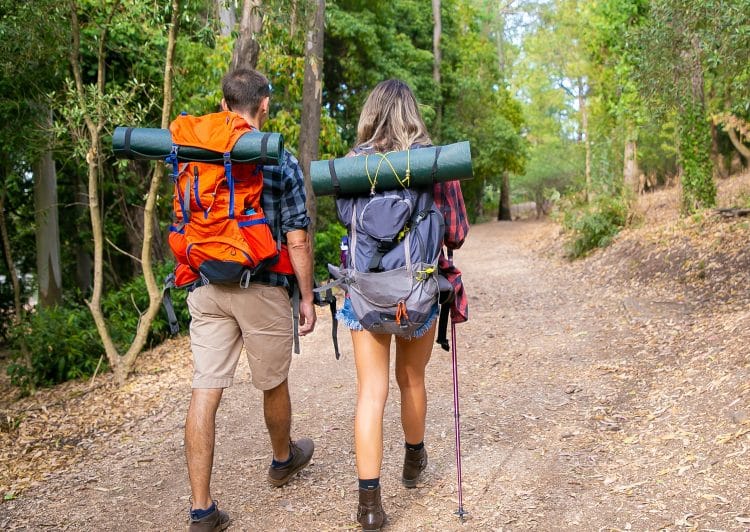
Heck yeah it is! But keep in mind, you cannot out-hike a bad diet.
That means you should be expending more calories than you consume which creates an energy deficit and therefore makes it possible to drop some pounds. So keep track of your food intake in combination with your activity habits.
How To Maximize or increase Calories Burned Hiking
There are a few ways to do this.
- Increase your hiking speed (increase the intensity)
- Wear a heavier backpack (add more resistance)
- Hike uphill and on various terrains that increase difficulty of activity (increase the difficulty)
Of course, be careful and gradually increase your speed or backpack weight. You want to ease into doing more especially if you’re just starting out. This will ensure you prevent injuries and don’t overdo it.
How Does A Backpack Make A Difference in Calories Burned?
Hiking and especially with the added weight of a backpack will increase the number of calories burned compared to not carrying any extra weight. That’s because the body has to work harder to overcome the added resistance which causes the muscles to use more oxygen and therefore energy/calories.
That doesn’t mean you should just strap on any backpack of any weight though. You shouldn’t be straining during your hike but rather wear a weight that you can safely and comfortably carry.
A common backpacking pack weight recommendation is 20 percent or less of body weight. So, for example, if you weigh 125 lbs, your backpack should not exceed 25 lbs.
The recommendation for a day hiking pack is about 10 percent. So if you weigh 160, the pack should not exceed 16 lbs.
Try our weight loss calculator and use these weight loss tips to reach your fitness goals.
Is Hiking A Good Activity For Overweight People?
Let us preface this section by saying that the term overweight applies to people who have both high and low body fat.
That’s because even if someone has a healthy body fat percentage, they may have a naturally bigger build/frame and/or more muscle mass than someone else of the same weight but who has more body fat.
But they would still be considered overweight according to body mass index (BMI) calculations.
Hiking is a great option for those who are overweight because it’s very low-impact, unlike running and jogging. These activities can be a lot on the joints especially for heavier individuals.
But while anyone can go for a hike to burn calories, improve their health and fitness, enjoy the outdoors, or all of the above, as with any form of exercise, it’s important to know your capabilities.
If you’ve never hiked, are just starting out, and/or are out of shape and carry extra body fat, it’s probably a good idea to start small and hike a short distance cross country or slightly uphill/downhill.
On the other hand, someone who is in great shape can hike for longer distances and up/down steeper areas.
Additionally, it’s not recommended that someone out of shape climb or overweight climb long distances on steep surfaces. This too can cause a lot of unnecessary stress on the joints.
How Many Calories Are You Burning On Your Hikes?
The calories burned hiking/backpacking calculator is a great tool for estimating energy expenditure during your outdoor hiking activities. Hiking is an excellent option for burning calories, losing weight, getting fitter and enjoying the beautiful outdoors.
This tool will help you to figure the amount of energy being used during various backpacking activities and it’s a fun way to keep track of your goals.




